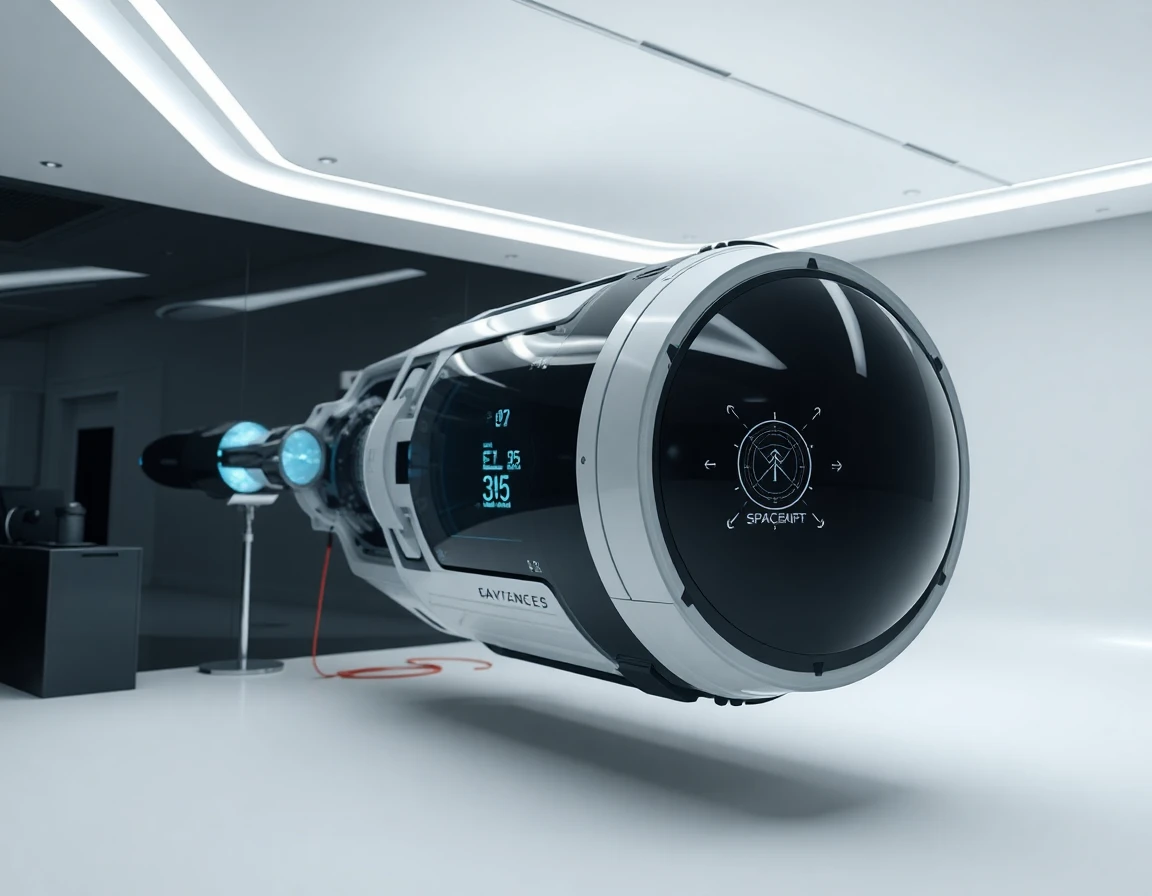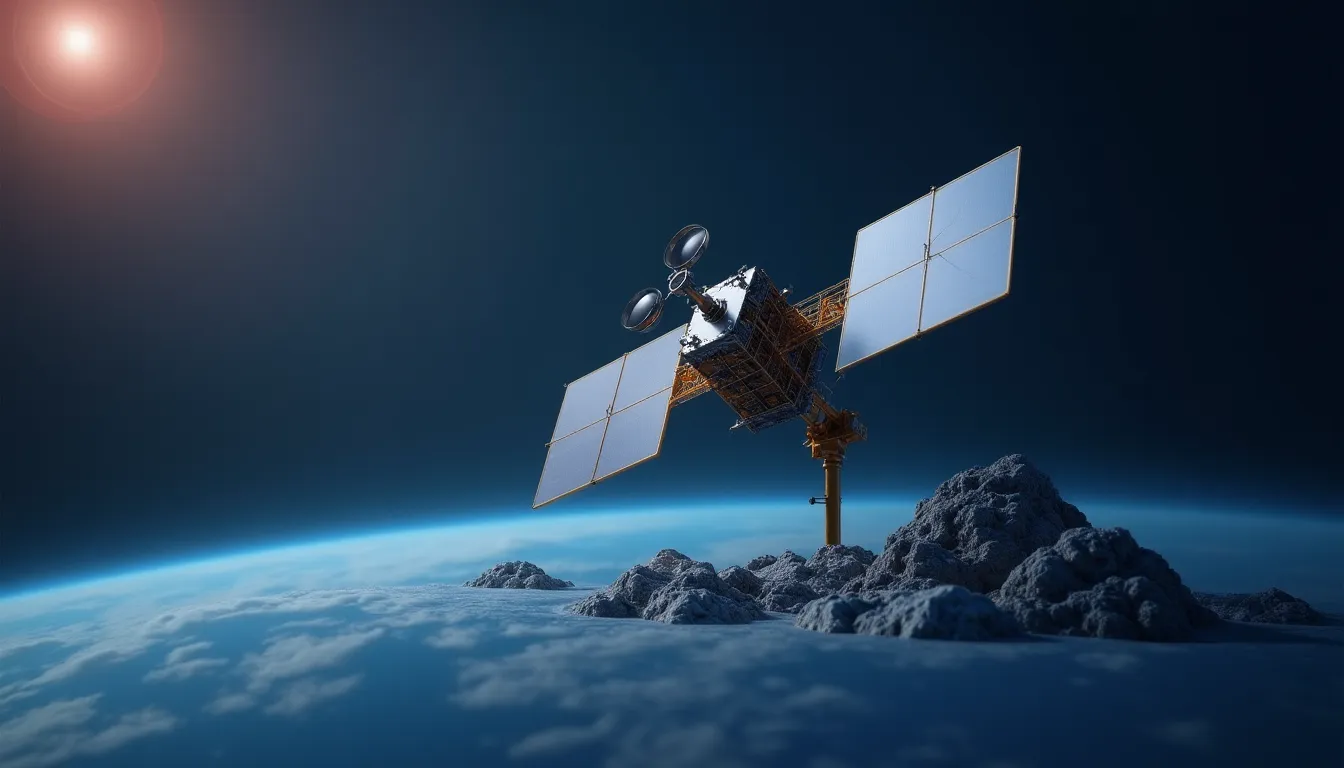The aerospace and defense sectors are experiencing a transformative wave of innovation, particularly in spacecraft technology. Recent achievements in satellite launches and resupply missions underscore the growing synergy between commercial enterprises and national security objectives. As of September 2025, notable advancements have been marked by the Space Development Agency (SDA) and SpaceX, alongside ongoing public engagement initiatives surrounding space observation.
SDA and SpaceX: A New Era of National Security Satellites
On September 10, 2025, the SDA successfully launched 21 Tranche 1 Transport Layer satellites aboard a SpaceX Falcon 9 rocket from Vandenberg Space Force Base, California. This mission represents a crucial step in enhancing the U.S. military’s communication and missile tracking capabilities.
The satellites, designed and built by York Space Systems, are poised to deliver low-latency, secure communication links essential for military operations. They integrate advanced features, including missile threat tracking and beyond-line-of-sight tactical data links, all from low Earth orbit (LEO). The Falcon 9 rocket, with first stage booster B1093, marked its sixth flight, successfully landing on the drone ship “Of Course I Still Love You” in the Pacific Ocean after deployment. This event initiates a 10-month campaign aimed at deploying over 150 satellites, significantly bolstering the U.S. military’s space-based architecture for communication and defense.
“The launch of the Tranche 1 satellites is a game-changer for our military capabilities in space. With enhanced communication and tracking technologies, we are ensuring that our forces remain connected and informed in real-time,” said a representative from the Space Development Agency.
Commercial Resupply Missions to the International Space Station
Following closely on September 14, 2025, SpaceX conducted a successful launch of a Northrop Grumman Cygnus XL resupply spacecraft on a Falcon 9 rocket from Cape Canaveral Space Force Station, Florida. This mission is part of NASA’s ongoing commitment to support the International Space Station (ISS), facilitating critical scientific research and operations.
The Cygnus XL spacecraft is slated to berth with the ISS on September 17, 2025, delivering essential supplies, crew provisions, and scientific experiments. This resupply mission illustrates the robust collaboration between commercial space entities and government agencies to ensure the continuous operation of the ISS, which serves as a platform for groundbreaking research and international cooperation.
Engaging the Public: Space Observation and Educational Outreach
Throughout September 2025, the visibility of the ISS has captured public interest, bolstered by NASA’s Spot the Station app, which allows users to track its movements across the sky. Beyond tracking, institutions like the National Space Centre are actively promoting stargazing challenges and educational podcasts aimed at fostering public engagement with space exploration.
This outreach is vital as it helps demystify space science and encourages the next generation of aerospace enthusiasts and professionals. Initiatives like these not only inspire curiosity but also highlight the importance of advanced navigation systems and precision accelerometers in modern spacecraft design and operation, ensuring that both commercial and scientific missions can meet their objectives accurately and efficiently.
The Technological Backbone of Aerospace Missions
As the aerospace industry evolves, several technologies play critical roles in enhancing spacecraft capabilities. Advanced navigation systems, including high-performance MEMS accelerometers, are essential for maintaining stability and precision in navigation. These systems are vital for applications ranging from military operations to commercial flight.
Additionally, the integration of advanced sensor modules—such as a 9-DOF MEMS IMU (Inertial Measurement Unit) which combines a three-axis gyroscope, accelerometer, and magnetic sensor—provides comprehensive motion sensing capabilities that are crucial for both satellite and spacecraft operation. This technology is instrumental in improving the accuracy of trajectory and navigation calculations, ensuring that any spacecraft can perform its mission reliably.
Furthermore, the utilization of high-precision fiber optic sensing coils in navigation systems underscores the industry’s focus on stability and measurement accuracy, which is critical for both defense and commercial applications. The ability to determine precise azimuth and angle measurements using systems like the YWJ01ZB150 gyro theodolite series enhances surveying and positioning capabilities across various aerospace applications.
Conclusion
In summary, the advancements in spacecraft technology witnessed in September 2025 reflect a dynamic interplay between national security initiatives and commercial space endeavors. The successful launches of the SDA’s satellites and SpaceX’s resupply missions to the ISS signify a robust progression in capabilities that not only enhance military operations but also support scientific exploration.
As the aerospace sector continues to innovate, the integration of advanced technologies such as precision accelerometers and MEMS gyroscopes will be paramount in ensuring the success of future missions. This ongoing evolution promises to redefine our understanding of space and its potential, inviting both public interest and professional engagement in the field of aerospace and defense.
References
-
September 2025 - Spaceflight Now (spaceflightnow.com) - 9/15/2025 Launch preview: SpaceX to launch new, improved Northrop Grumman Cygnus XL resupply ship to the space station · September 14, 2025 Will Robinson- …
-
Space Development Agency completes successful launch of First … (www.spaceforce.mil) - 9/11/2025 A SpaceX Falcon 9 rocket launches from Vandenberg Space Base, Calif., Sept. 10, 2025. It carried 21 Tranche 1 Transport Layer space vehicles …
-
Space Brief 11 Sep 2025 - KeepTrack (keeptrack.space) - 9/11/2025 Space Brief 11 Sep 2025. Key updates today focus on SpaceX’s latest satellite launch for the U.S. military, critical space resource assessments …
-
The Mars Report: September 2025 — Special Edition - NASA Science (science.nasa.gov) - 9/11/2025 The latest mission updates, spacecraft news, science findings, unique Mars imagery — and a vision for the humanity-defining possibilities that …
-
Space Development Agency, SpaceX to launch next-gen national … (spaceflightnow.com) - 9/10/2025 Launch preview: Space Development Agency, SpaceX to launch next-gen national security satellites. September 10, 2025 Will Robinson-Smith. 21 …
-
Space Development Agency launches first operational satellites (www.defensenews.com) - 9/10/2025 A SpaceX Falcon 9 rocket launched the Space Development Agency’s first Tranche 1 satellites on Sept. 10, 2025 from Vandenberg Space Force Base, …
-
What’s Happening in Space: September 2025 (nationalspaceacademy.org) - 9/8/2025 NS-35 will be the thirty-fifth New Shepard spaceflight mission, operated by Blue Origin. This suborbital flight will be an uncrewed mission with …
-
What’s Happening in Space Policy August 31-September 6, 2025 (spacepolicyonline.com) - 8/31/2025 The Trump Administration wants to terminate SLS and Orion and switch to commercial alternatives, as well as cancel the Gateway lunar space …
-
2025 NASA News Releases (www.nasa.gov) - 4/11/2025 NASA will provide live coverage of the launch and docking of a Roscosmos cargo spacecraft carrying about three tons of food, fuel, and supplies for the crew …



